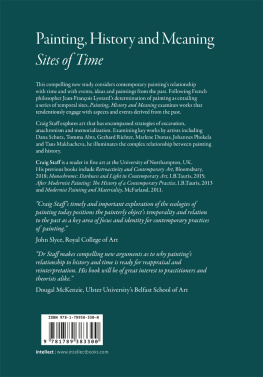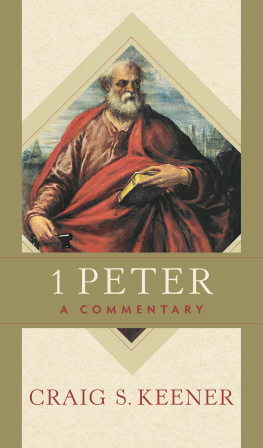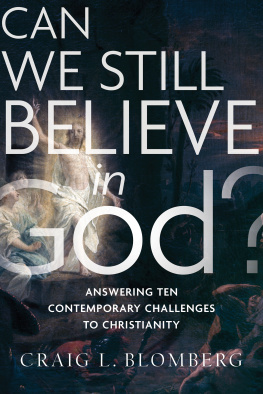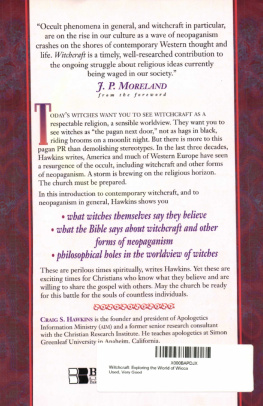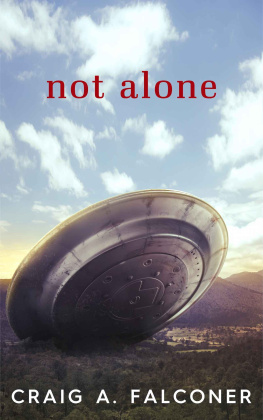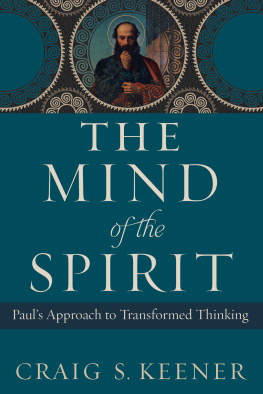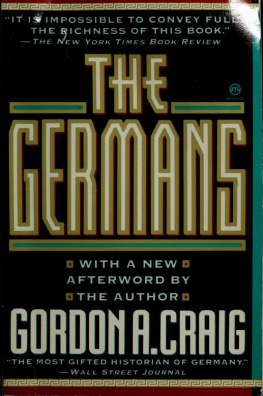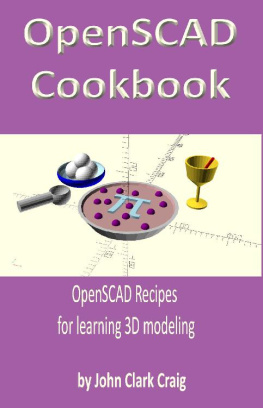Craig Staff - Retroactivity and Contemporary Art
Here you can read online Craig Staff - Retroactivity and Contemporary Art full text of the book (entire story) in english for free. Download pdf and epub, get meaning, cover and reviews about this ebook. year: 2019, publisher: Bloomsbury, genre: Romance novel. Description of the work, (preface) as well as reviews are available. Best literature library LitArk.com created for fans of good reading and offers a wide selection of genres:
Romance novel
Science fiction
Adventure
Detective
Science
History
Home and family
Prose
Art
Politics
Computer
Non-fiction
Religion
Business
Children
Humor
Choose a favorite category and find really read worthwhile books. Enjoy immersion in the world of imagination, feel the emotions of the characters or learn something new for yourself, make an fascinating discovery.

- Book:Retroactivity and Contemporary Art
- Author:
- Publisher:Bloomsbury
- Genre:
- Year:2019
- Rating:3 / 5
- Favourites:Add to favourites
- Your mark:
- 60
- 1
- 2
- 3
- 4
- 5
Retroactivity and Contemporary Art: summary, description and annotation
We offer to read an annotation, description, summary or preface (depends on what the author of the book "Retroactivity and Contemporary Art" wrote himself). If you haven't found the necessary information about the book — write in the comments, we will try to find it.
Retroactivity and Contemporary Art — read online for free the complete book (whole text) full work
Below is the text of the book, divided by pages. System saving the place of the last page read, allows you to conveniently read the book "Retroactivity and Contemporary Art" online for free, without having to search again every time where you left off. Put a bookmark, and you can go to the page where you finished reading at any time.
Font size:
Interval:
Bookmark:


ALSO AVAILABLE FROM BLOOMSBURY
The Curatorial
Reparative Aesthetics, Susan Best
Counter-Memorial Aesthetics, Veronica Tello
Enduring Time, Lisa Baraitser

Contents
I first broached the possibility of writing this book with Liza Thompson, someone who I previously had had the good fortune of working with whilst she was at I.B.Tauris. At that point, which was towards the latter half of 2014, the book not only had a different title but my intentions for it were somewhat inchoate. With her guidance, I was not only able to begin formulating a coherent thematic approach, but I was also able to begin the task in earnest. I remain indebted to her editorial nous, clear-sightedness and general support. With regard to the books genesis from that point on, thanks must also go to Frankie Mace who has been able to steer the project to its successful conclusion. Fundamentally, Retroactivity and Contemporary Art remains indebted to the artists whose work is included. Their willingness to engage with and lend their support to my undertaking is very much appreciated. In this respect, I would like to extend a special thanks to Chloe Dewe Mathews, Hannah Leighton-Boyce and R di Martino. I am also grateful to the various gallery and museum spaces that have provided assistance and, in certain cases, granted permissions for their works to be reproduced within this study. As the recipient of research funds from the University of Northampton, I would like to thank the Faculty of the Arts, Science and Technology for its support. Finally, a heartfelt thank you must go to my family, who are always there, in time.
So we beat on, boats against the current, borne back ceaselessly into the past.
Founded in 1779 by John Fothergill on behalf of the Religious Society of Friends, Ackworth School sits approximately four miles due south of Pontefract in West Yorkshire. In accordance with guidelines as set out by the British government, during the Second World War blackout curtains were hung in the buildings windows with the intention of forestalling the school becoming a potential target during Germanys night-time air raids.
Although the war, along with the governments blackout regulations, ended in 1945, a number of the curtains at the school remained a fixture of the buildings East).
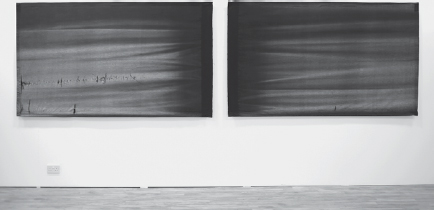
Figure I.1 Hannah Leighton-Boyce, East Wing 19392011, 2012. Found curtains with extended analogue exposure, diptych; each 229 130 cm.
In the first instance, the heavily faded curtains are reminiscent of Andy Warhols Shadows (1978), a series of 102 silkscreened canvas panels that were based on photographs of shadows taken in the artists studio. In addition to their visual affinities, both harness, albeit in markedly different ways, the variegated effects of light.
Bearing in mind the fact that they were, and arguably still are, a pair of curtains brings to Leighton-Boyces work a further set of connections with the annals of art history. On one level, East Wing 19392011 continues modernisms fascination with the objet trouv or found object. More specifically, they recall Pliny the Elders anecdote concerning the rival artists Zeuxis and Parrhasius and their attempts to outwit each other using, among other things, a painting of a linen curtain.
In the excursus to his Natural History, an encyclopedia first published towards the latter half of the first century, the natural philosopher recounts the various exploits of artists that lived and worked in the ancient world. One of the most compelling was that of Zeuxis and Parrhasius, two rival painters who lived during the fifth century BCE :
Parrhasius and Zeuxis entered into a competition. Zeuxis entered a picture of some grapes so true to nature that birds flew up to the wall of the stage. Parrhasius exhibited a linen curtain which was painted with such realism that Zeuxis, swelling with pride over the verdict of the birds, demanded that his rival remove the curtain and show the picture. When he realized his error, he yielded the victory, frankly admitting that whereas he has deceived the birds, Parrhasius had deceived Zeuxis himself, a painter.
While such points of contextual affinity and overlap are an interesting aspect of East Wing 19392011, the works meanings, given This fundamental question frames the study as a whole and as such, focuses upon those works that foreground some aspect of the past (or equally, what has passed), as a means to engender a particular set of meanings.
Within the context of what follows, the analysis of retroactivity within contemporary art will encompass instances that are somehow organized around particular historical moments. So, for example, Raum/Room (1994) by Thomas Demand is based on the attempted assassination of Adolf Hitler in 1944. However, as the study will evince, history can never be unequivocal. Working outwards from this admission means that the representation of such moments is very rarely a straightforward process, nor are such representations wholly indubitable. In other words, and as Keith Jenkins has noted, history, as both a discipline and a methodology, is marked by epistemological fragility.
Within Re-thinking History, first published in 1991, Jenkins identifies four basic reasons for historys epistemological fragility. First, the totality of past events remain irrecoverable because their content is virtually limitless.
Clearly then, history, as a discipline, is characterized by a series of factors that colour the extent to which the past can be understood as such. And as Jenkins
With Jenkinss assertion that historians can only recover fragments in mind, the aim of the first chapter is not With this contention in mind, the work of Gerard Byrne will be considered.
On one level, A thing is a hole in a thing it is not, Byrnes multichannel installation of 2010, is oriented towards that which has become canonical, at least with regard to our understanding of late or so-called high modernism. Taking as its primary focus a set of both practices and discourses that pertained to Minimalism
Byrnes approach to the ostensibly ruinous nature of modernisms intellectual and artistic histories works outwards from the following admission, namely, that it is not and never was a static, totalizing narrative or unified and for that matter monolithic whole. Rather, modernisms historiography is written and indeed continues to be rewritten as a series of moments that are now, to a lesser or greater extent, unmoored from their site of origin.
While the initial point of consideration will be one of examining indexicality as a preeminent model for photography, the main focus of the second chapter will be that of considering how the index, conceived within this particular context as a trace, either seeks to negotiate with or in some cases fall beyond the ontology of the photographic image.
While Rosalind Twombly, her pronouncements on indexicality remain apposite for her reading of time in relation to work of art.
Rather than simply rehearse Krausss own reflections on the index and the broader set of questions raised by her argument, the chapter will be oriented towards how the indexical sign-type as trace reinscribes some aspect of what has passed or previously occurred into the present tense. With this basic admission in mind, the work of Sophie Ristelhueber and Adam Broomberg and Oliver Chanarin will be considered.
Font size:
Interval:
Bookmark:
Similar books «Retroactivity and Contemporary Art»
Look at similar books to Retroactivity and Contemporary Art. We have selected literature similar in name and meaning in the hope of providing readers with more options to find new, interesting, not yet read works.
Discussion, reviews of the book Retroactivity and Contemporary Art and just readers' own opinions. Leave your comments, write what you think about the work, its meaning or the main characters. Specify what exactly you liked and what you didn't like, and why you think so.

